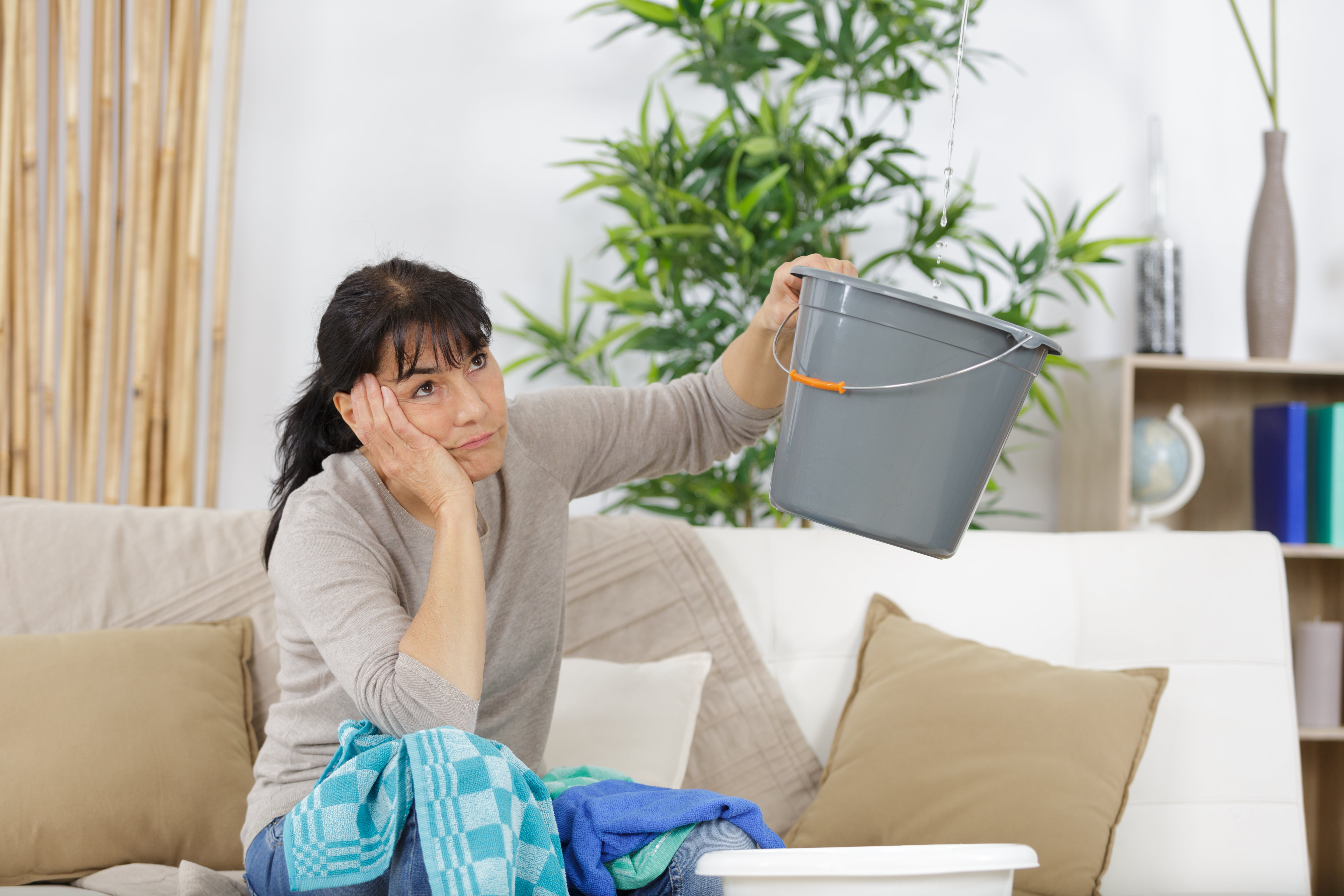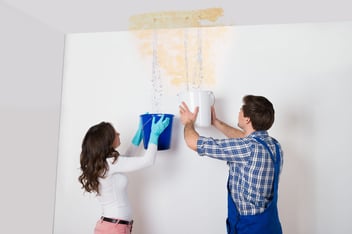As a homeowner, you want to ensure you’re doing everything you can to protect your home and your family. That’s why homeowners insurance is so important. Homeowners insurance can help protect you from many of life’s most surprising situations.
There are two things every homeowner wants to be sure of when it comes to their home, and that is that their home is on a sturdy foundation and that the roof is protected. The cost to repair a roof can be pricey. It can cost $25,000 just to replace the shingles on the roof and more than $40,000 for a metal roof replacement. Roof leaks are also costly depending on the severity of the leak. So, it’s important to know that homeowners insurance covers roof leaks.
This article will help answer the question: Does homeowners insurance cover roof leaks?
How Insurance Companies View Roof Leaks
When it comes to roof leaks, many insurance companies don’t see them all as valid claims, which means that not all roof leak repairs are paid out by the insurance company. The bottom line is that the root cause is the determining factor for most insurance companies. Most roof leaks are covered by homeowners insurance as long as the root cause of the leak is included in the “open peril” list of the insurance policy.
However, if the damage is not caused by a covered peril, you may have to cover the damages and cost to repair yourself. That is because the insurance company will likely not reimburse you to repair a roof leak if it is determined the leak is derived from natural wear and tear or lack of maintenance on your part. The same goes for a roof that is old. That is considered a lack of maintenance on the part of the homeowner.
Unfortunately, many homeowners fail to provide the proper maintenance for their roofs. They don’t replace missing or cracked shingles in a timely manner, and they fail to clean the gutters, which impacts the leaves building up to be heavy burdens on their roofs. Oftentimes, it’s only when things have reached a noticeable, problematic state and someone needs to be called in, that roofs are even thought about by the homeowner. Homeowners then assume their homeowner’s insurance will pay the cost to repair these neglected roofs.
What’s a Peril and How Does That Cover Me?
“Open perils,” or “all perils,” is a specific type of insurance coverage. It means that your homeowner's insurance will pay out for anything that happens to your property or “stuff” unless it’s specifically excluded from your policy. So, if an apartment pipe burst ruined all of your furniture, and your policy doesn’t specifically say this isn’t covered, your insurance company will have to approve your claim, by default. So, if the damage is caused by a listed peril, you’re covered.
Perils Covered by Most Insurance Companies
There are perils or causes of damage that insurance companies will and won't cover. Here’s a list of perils covered by most homeowners insurance policies:
-
- ● Damage due to aircraft
- ● Damage due to an electrical surge
- ● Damage due to riots
- ● Damage due to sudden discharge of water or steam
- ● Damage due to an explosion
- ● Damage due to fallen objects
- ● Damage due to vandalism
- ● Damage due to hail and windstorms
- ● Damage due to theft
- ● Damage due to lightning
- ● Damage from a volcanic eruption
- ● Damage due to the weight of snow or ice
-
Perils Most Insurance Companies Won’t Cover
As with most things, roofs will deteriorate and develop cracks and leaks over time, as they age. Most insurance companies exclude the general wear and tear of the roofs in their coverage. Aside from that, some other perils or hazards may be excluded from your homeowner's insurance policy.
Here are some perils that your insurance company may exclude from your policy:
- ● Earthquakes
- ● Floods
-
- ● Government action
- ● Infestation of insects and animals
- ● Landslides/mudslides
- ● Rust and Corrosion
- ● Smog
Does Homeowners Insurance Cover Roof Leaks?
Yes, homeowners insurance covers roof leaks if they occur accidentally and suddenly by a covered peril like a storm with high winds or hail. Slow leaks, or leaks caused by a lack of maintenance, are not covered by all homeowner’s insurance companies.
To avoid this being an issue in the future, ensure you’re properly maintaining your roof. As a homeowner, It’s important for you to have your roof inspected regularly, especially after major storms or natural disasters. That will help to align any damage to open perils and not poor maintenance. Otherwise, your insurance company can question the legitimacy of your claim.
What To Do if You Suspect a Roof Leak
It’s not always easy to locate a roof leak, but the indication of a roof leak is a brown spot on your ceiling. It’s best to find the leak as soon as possible to minimize water damage and to increase the chances of having your homeowner’s insurance cover it. So, schedule a roof inspection as soon as possible.
In the meantime, try to remember the events that happened before the leak. If heavy winds or snow are the culprits, for example, make sure you document the events and dates. This will make it easier to submit a claim to your insurance company.
Here’s what to do if you suspect a roof leak:
Determine where the leak is coming from
If you notice black spots, mold, or water stains along the walls or in the ceiling, there is a good chance of a leak somewhere. If the ceiling is leaking, check the room above for potential causes, soft flooring or other indicators of water damage. If the roof is leaking, search for points of entry, such as missing, damaged or cracked shingles, vent pipe or chimney cracks and missing gutters. You can also check your attic for signs of water damage or mold, especially on a rainy day. Rotted wood and moldy insulation are common signs of water leaks.
Make repairs right away
Once you find the source of the leak, it is important to make repairs right away to minimize damage. You may be able to fix some of the problems yourself, while others will require a professional. If you have to file a claim, then document the process closely before making any changes.
Check Your Roof Regularly
Make sure your roof is in good working order by checking it regularly. Check if there are any cracked, damaged or missing shingles and replace them promptly. Ensure the chimney and vent pipes are not damaged and the flashing is still tacked in place. By inspecting the ceiling on the top floor of your home regularly, you can catch small leaks before they become a big problem. If there is any damage to your highest ceiling, check the attic and roof for damage right away.
Of course, the best way to ensure you don’t have any leaks on your roof is to have a professional roof inspection done to assess the leaks and properly document any damage for insurance purposes.That’s where United Claims Specialists’ comes in! We can be first on site to help you evaluate and document the damage so that you can make the most of your homeowners insurance coverage. Then, we can help you get the best roof repair in your local area.




 Storm Damage
Storm Damage  Property Damage
Property Damage Appraisal Services
Appraisal Services Contact Us
Contact Us




.jpg)
 claims@ucspa.com
claims@ucspa.com Mon-Fri: 9:00am-5:00pm
Mon-Fri: 9:00am-5:00pm